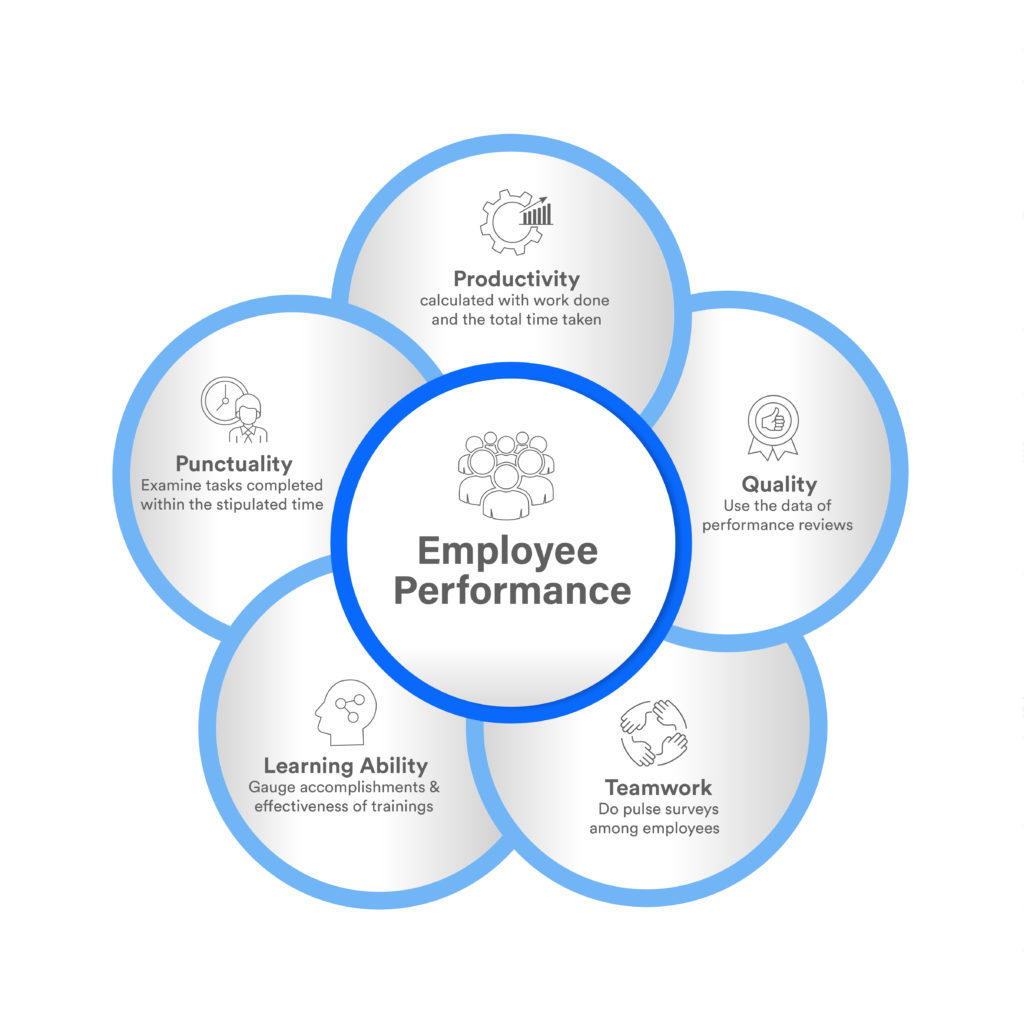UBS App is now Superworks

In the past few years, small and medium enterprises across India arose from the shadows of big companies and became an integral component of India’s development.
SMEs not just contribute to India’s GDP but also are considered a critical hub that is creating more than 120 million employment opportunities today. In such a scenario, focusing on employee performance and enhancing the internal talent of SMEs is a necessity.
No matter the size and type, performance evaluation has always been an important yet challenging human resources operation. Even today, it remains one of the daunting tasks for every business, especially for small and medium enterprises.
In this blog, we will tell you everything an SME leader should know to tackle performance evaluations and acquire the best results.
In layman’s words, performance metrics are information that helps employers to track processes in their businesses.
This can be acquired by utilizing activities, the behavior of the workforce, and productivity as key measurements.
![]()
Managers then utilize these measurements to assess the performance of employees.
Performance metrics are about an established goal such as employee performance, sales objectives, and more.
![]()
It helps businesses acquire the right information, which can be used to improve and increase their profits.
Additionally, performance metrics also aid businesses in designing policies and strategies to meet several critical goals.
They also help employers make necessary adjustments to the business operations and take preventive steps at the right time.
According to a report, 95 percent of managers stated that they are unhappy with performance reviews.
This is when performance metrics come into the picture again.
They make the performance appraisal process easier by helping HRs to acquire precise and accurate information about every employee’s performance without any hassle.

So, here are the five different types of employee performance metrics that should be used while reviewing an employee’s performance:
No matter how many tasks an employee completes, it will reap no benefit if the quality is compromised.
That means only efficient work can lead a company to success. A big question arises here – how can HRs gauge the efficiency/productivity of an employee?
Here are four simple ways to do it:
These steps will help you understand if the employee is meeting the expectations or not.
It is undeniable that quality is always more vital than quantity. Poor quality work often loses customers, results in a declined bottom line, and more.
So, quality of work is the second most important performance metric.
When it comes to measuring quality, it should be done while considering the type of work/role an employee is involved in. It should always be based on the industry and the employee’s responsibilities.
To measure quality, HR managers can calculate the total percentage of the refused or any redone work.
Of late, teamwork has become a crucial metric to evaluate performance in a company.
For the unintended, teamwork is an efficient tool to improve overall productivity as well as employee engagement.
A team that works together can solve any complicated issue, thereby helping the business to sail through every turbulence.
While evaluating an employee’s performance, an employer should check if he or she went the extra mile to help a team member or assisted/mentored someone who was facing certain challenges.
HR managers can use pulse surveys to know the teamwork of every employee. In the survey, questions like who supported you the most? should be included. Such questions will help you know the employee who has been a great support to everyone.
As part of the performance appraisal process, companies also include several courses and training for employees.
Such learning programs help employees to upskill along the way. On the other hand, it also allows HR managers to know how much employees have learned and adapted.
Here are some simple ways to measure the learning abilities of employees:
If an employee passes all the three areas mentioned above, he or she is a good learner.
Delivering tasks in a timely manner is another performance metric where most employees fail.
Some of the common reasons why employees fail to deliver work promptly are disengagement, mental health issues, lack of interest, and more.
That being said, here are the five ways HR managers can measure the punctuality of employees:
Not adhering to timeliness once or twice can be understood, but if an employee does it every time, then it can impact the overall employee performance.

Now that you know everything about employee performance metrics and the performance review process, we have some bonus tips for you.
These tips can help SME leaders effortlessly acquire desired results today and time ahead:
We are in a volatile and changing environment. To make the performance appraisal process future-proof, every MSME leader should develop new ideas to address their talent concerns.
We hope this article will solve all your performance evaluation problems and help you accelerate the growth of your employees.
Performance evaluation is a process to gauge the work and results of an employee based on his or her role and duties.
Performance evaluation helps employees to get a clear picture of their managers’ expectations. On the other hand, the performance evaluation process also offers employers the necessary information for making employment decisions for their employees.
Performance reviews must be achievement-oriented, unbiased, and advancing. This, in turn, will make the performance evaluation process effective.
We are here to help you find a solution that suits your business need.
Get a visual representation of how we work!
Schedule DemoOur sales expert is just one call away to meet your needs.
Get In TouchHave a question?
Chat with Us